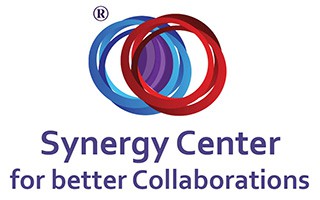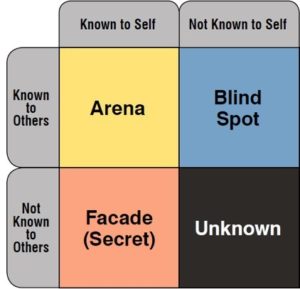Diversity issues are emotional, and people tend to shy away from discussing them. Topics such as gender, equality, hierarchy, ethnicity, nationality, physical impairment, and so on, are uncomfortable to discuss. And because diversity is an inevitable, increasingly, senior managers find it necessary to initiate a discourse about it. This discourse requires you to figure out an effective way of encouraging people to air what disturbs them freely or comfortably; hence, the discourse helps to unlock hidden issues, which relate to diversity.
Starting a conversation about diversity is easier said than done. It’s not easy to get people to open up about deep issues, which surface under certain circumstances. It’s your duty to find out how to create those circumstances effectively. Careless attempts can be met with resistance, criticism or ridicule. And so, managers must be very careful with their approach to start a discourse about diversity in their organizations.
Luckily, there’s one tried-and-tested method that Dr. Rami Ben-Yshai applied, and which worked with some level of success. This method is known as the “massage exercise”. It’s what this article is all about. Let’s dig in.
The Massage Exercise
When carrying out this exercise, don’t disclose its intentions; let people interpret for themselves the undertones implied by the exercise. This technique would enable the participants to raise issues that they would otherwise not have talked about were it not for the circumstance the exercise created. Then, you can ask them to give circumstances, which they experienced diversity.
It’s important to note that this exercise is voluntary. Once you’ve attained the willingness and ease of employees to open up, you can relate diversity to areas of expertise, noting that various employees have different skills and abilities. Usually, employees view expertise areas as not a threat.
Your goal is to bring up deep, underlying issues, which threaten people, and which they may not be willing to share publicly. Find out about their opinions regarding what aspects of diversity cause conflict or prevent an organization from functioning normally. Ensure that they give you reasons.
Once the participants air the “problematic” aspects, relate them to organizational value. For example, you can relate how the choice in decision-making between emotion and reasoning affects the consideration of the needs of employees from an economic standpoint. You can even relate how an outlook, whether it be optimistic or pessimistic, relate to innovation in the organization.
Order of Questions for Discussion
- Give examples of situations in which you witness diversity in your organization.
- In your opinion, what aspects of diversity cause conflicts or prevent the organization from functioning normally? Why?
- What value does each aspect contribute to the organization?
Once you get answers to these questions, examine each aspect deeply. You can even come up with a topic of discussion before the examination if you’ve a deeper understanding of the organization.
Example of an Expanded Discussion: Differences in Management Style between Men and Women
Men and women exhibit different management styles – there’s no denying this fact. These differences in managerial behavior are clear, evident and dominant, and manifest within and outside an organization. For meaningful synergy to exist between men and women managers in an organization, there must be an acknowledgement of their different management styles.
Failure to acknowledge diversity gives lots of emphasis on sameness (homogeneity). This emphasis increases the vulnerability of the management to bias and errors of thinking. Prejudice clouds one’s judgment, making it difficult to identify deep-rooted issues in the organization.
Men and women portray masculinity and femininity to variable degrees. And so, women managers can exhibit masculine management styles to a certain level. On the other hand, men can exhibit feminine management style to a certain degree.
Fear and emotion don’t have a place in a management style whose basis of decision-making is completely masculine. And because masculinity places an emphasis on rigidity, it’s out of the question to flex boundaries. Unresolved issues, which lie beneath, can be difficult to surface if boundaries are inflexible. Communication pattern is one-way; the subordinate has little or no chance to voice their concerns to their seniors. Thus, employees voice their pent-up issues through conflicts or feelings of invasion, which are destructive. Synergy can struggle to happen under a purely masculine management style.
On the other hand, the feminine management style gives room for expression of emotion during decision-making and work. There’s a higher chance of creating synergy, because there’s dialogue and conflict resolution. However, there’s one problem. Boundaries can become unclear when you define them.
Arguably, men tend to be more invasive than women. Synergy can struggle to occur if feelings of invasion develop. This isn’t to say that synergy can’t develop under a masculine management style. In this circumstance, to create synergy, you should acknowledge factors, which prevent it from happening. It’d also require you to acknowledge that the management style of each gender contributes to organizational value.
Hence, it’d be of much value to the organization if both management styles coexist. Forcing women to embrace a masculine management style may fail to produce the desired outcomes. It’s much more appropriate for decision-making to be based on reasoning but emotion as well. This is for the sake of creating synergy.
When concluding the conversation about diversity in your organization, don’t forget to ask the participants to give feedback and conclusions.
Diversity is not a Threat – it’s a Challenge
The seven forms of interactions coexist at variable degrees at any given moment in an organization. People have different interpretations of the coexistence. And so, people’s perceptions of interactions would never be objective.
When an employee or a manager develops a feeling of invasion, the invading party doesn’t perceive their actions as invasive. Hence, there’s no point in explaining to the invader why their perception isn’t correct. It’s important to emphasize on actions and behaviors, which encourage flexible boundaries and synergy. People differ in how they perceive realities. These differences are a challenge – not a threat.
Let’s look at a case that clearly demonstrates this point.
A Case of a Forceful Management of a Development Department
In a certain organization, the management style of a development department was mostly masculine. The vice president for development was heading the department. Dr. Ben-Yshai offered organizational consultant services to the organization. His task was to figure out what made the organization “ill”. And so, he created a 7 forms of interaction questionnaire, tailoring it to the organization’s needs. This questionnaire revealed that the organization’s employees had different degrees of perception of destructive forms: invasion and obscurity. The highest degree was 25 per cent, but some employees reported lower than 5 per cent.
The managerial style of the VP couldn’t allow him to acknowledge these differences in the perceptions of reality. The manager used the findings to disprove the existence of obscurity. This worsened the situation. Dr. Ben-Yshai was quick to rescue this situation.
He didn’t want to come off as criticizing the manager’s move publicly in a workshop. And so, he held a meeting privately with the manager before the workshop. The proceedings turned out to be more complex than he expected, but he reached a breakthrough after holding several private meetings with the manager.
For the first time, the manager showed willingness to acknowledge diversity in the development department. He would treat issues about invasion and obscurity raised by the employees individually. This change in attitude made it significantly easier to move to the next stage: create synergy between the employees of the department.
All in all…
A conversation about diversity in an organization is uncomfortable, but necessary for synergy creation. It’s not easy to get employees to open up about underlying issues. Besides, some styles of management can prevent the discourse from taking place. One method that has been used successfully to start a conversation about diversity in an organization is the “massage exercise.”





ergfir nolikz
10 Jan 2019Some really choice articles on this internet site, saved to bookmarks.